All products featured are independently chosen by us. However, SoundGuys may receive a commission on orders placed through its retail links. See our ethics statement.
Sony WF-1000XM4 vs Apple AirPods (3rd generation)
Published onOctober 10, 2022
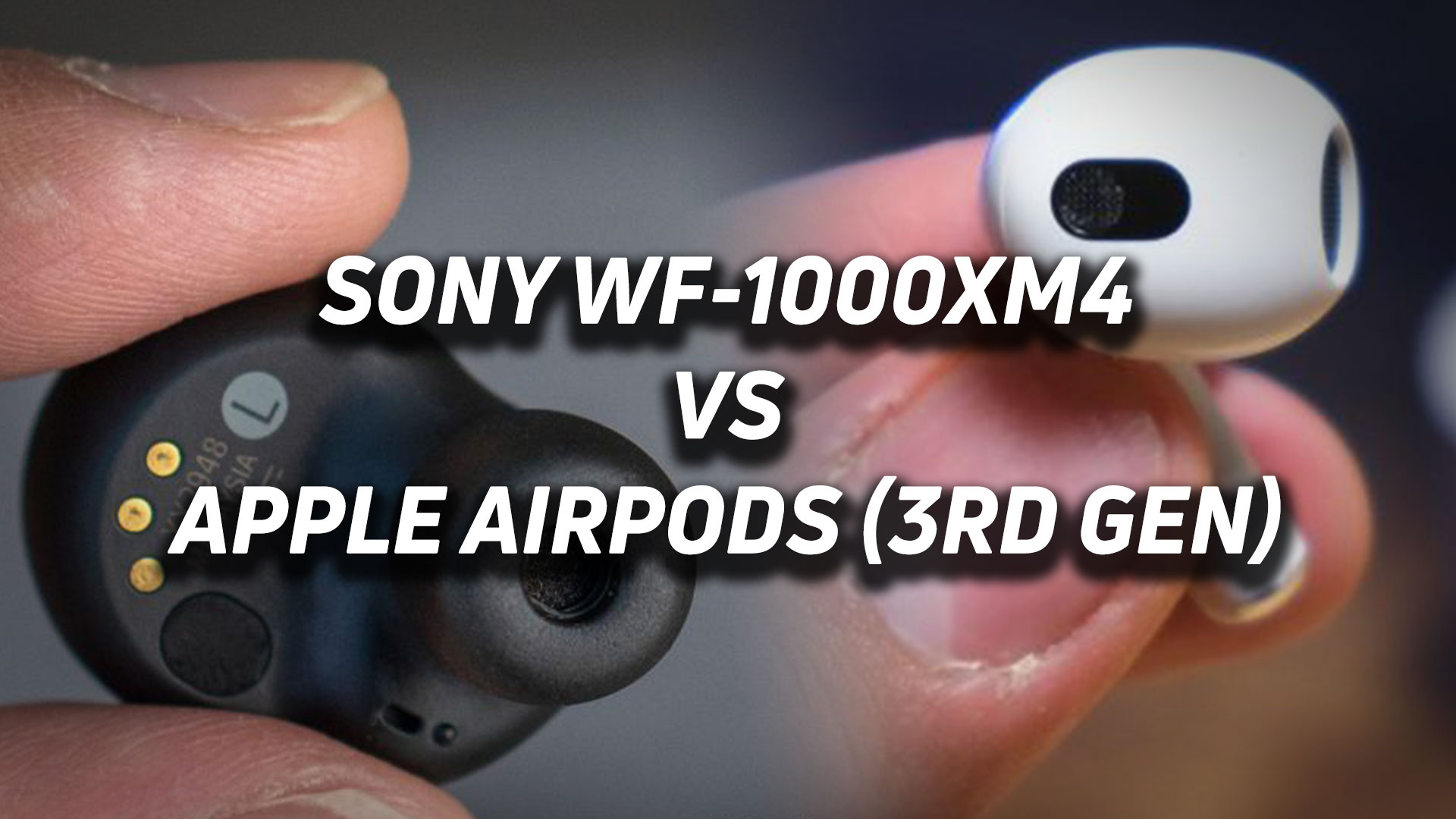
If you want the best and the newest, Sony and Apple probably come to mind. Both have steadily updated their true wireless (TWS) earbuds arsenal in the last while, and both consistently rank on best lists. The question is which is better: Sony WF-1000XM4 or the Apple AirPods (3rd generation)? We have the answer.
Editor’s note: this article was updated on October 10, 2022, to include an updated microphone chart for the Apple AirPods (3rd generation), a comparison chart for noise canceling, FAQs, the Beats Fit Pro and Samsung Galaxy Buds 2 Pro in the alternatives, and to update formatting.
Does the Sony WF-1000XM4 fits more securely than the Apple AirPods (3rd generation)?
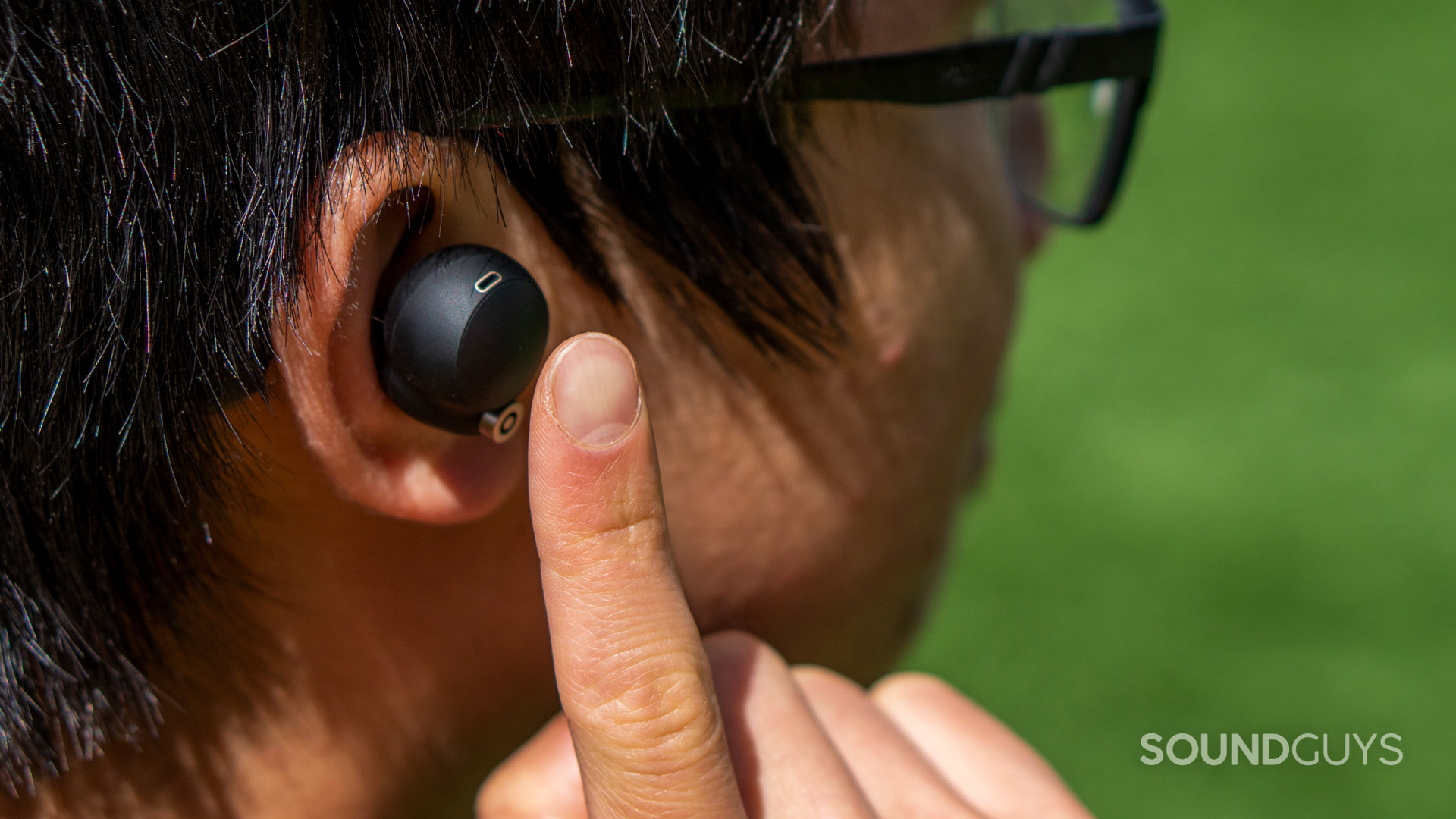
In general, people stick to what they know when it comes to true wireless earphones. They cost enough that most people who bought AirPods haven’t necessarily sampled the competition. If your AirPods (2nd generation) broke, it makes sense that you’d look at the new AirPods, but here’s what every other manufacturer has figured out: everyone’s ears are shaped differently. Sony, unlike Apple, ships the WF-1000XM4 with foam ear tips to accommodate each person’s unique anatomy. Apple’s one-and-done philosophy might work for other things, but the in-ear fit of the AirPods (3rd generation) isn’t one of them.
To be fair, the AirPods (3rd generation) fits more comfortably than its predecessor, but the fit is not nearly as secure as the WF-1000XM4. In addition, the unsealed design of the AirPods (3rd generation) likely means you’ll have to turn up the volume to drown out environmental noise.
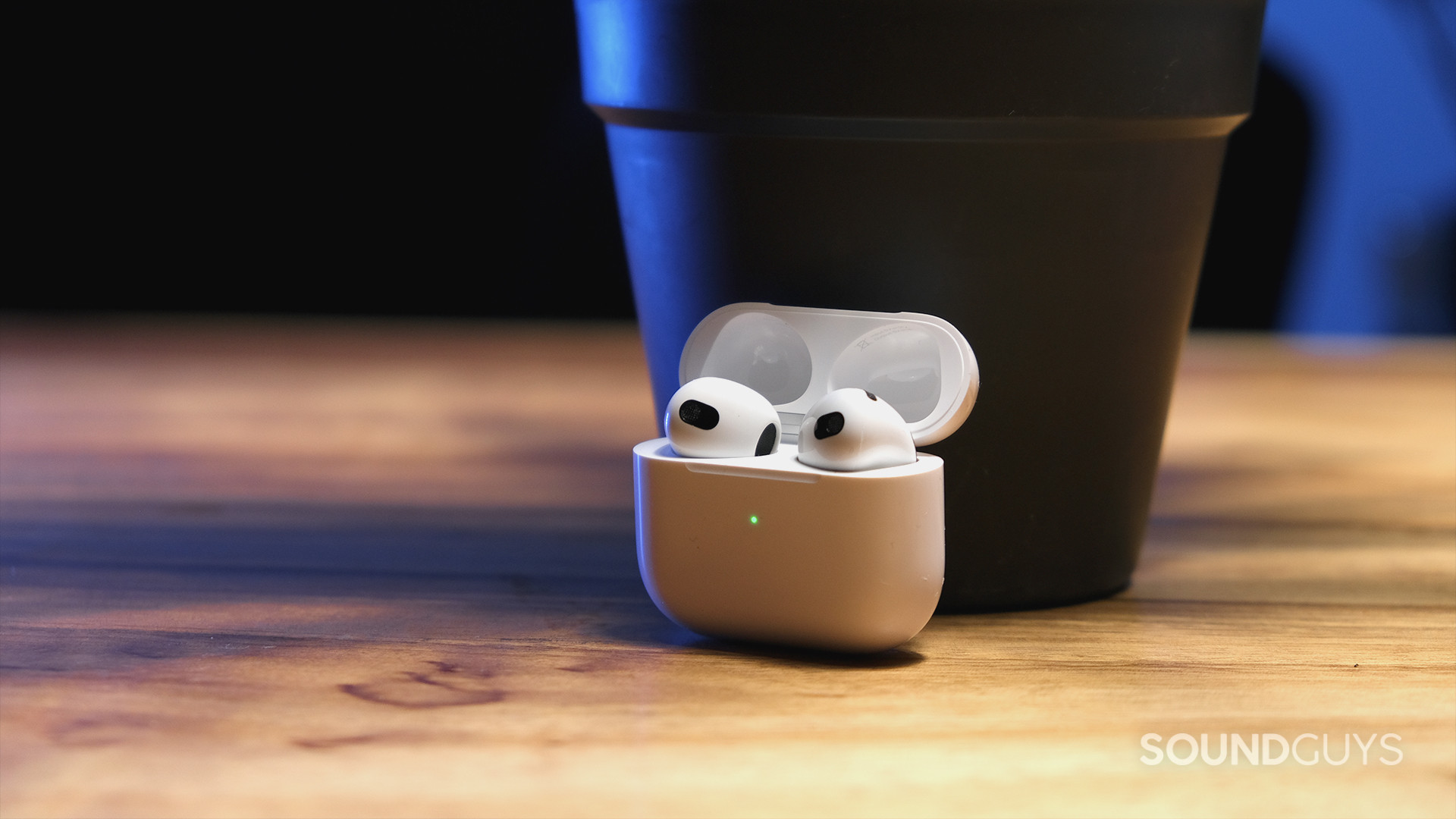
By contrast, the Sony app has a fit test to ensure your buds sit correctly. Apple problem solves in the other direction. Instead of ensuring your buds fit well for the best sound, Apple knows the fit is unsealed, so it includes Adaptive EQ to adjust the audio for a bad fit. That doesn’t necessarily help you if you’re running for the bus and your AirPods (3rd generation) earbud falls out though.
The Sony buds are the more versatile candidate for the gym. Both the WF-1000XM4 and AirPods (3rd generation) have the same IPX4 rating, so from a sweat protection angle they’re equal. The other factors to keep in mind include fit, with the Sony WF-1000XM4 edging ahead, especially if you’re doing anything dynamic like sprints or jumps. If you like to zone in and ignore other gym goers, the noise canceling on the WF-1000XM4 certainly wins out, whereas the unsealed fit of the AirPods (3rd generation) keeps you aware. Of course, you can also toggle on Ambient mode with the Sony buds.
Both the AirPods (3rd gen) and Sony WF-1000XM4 are portable
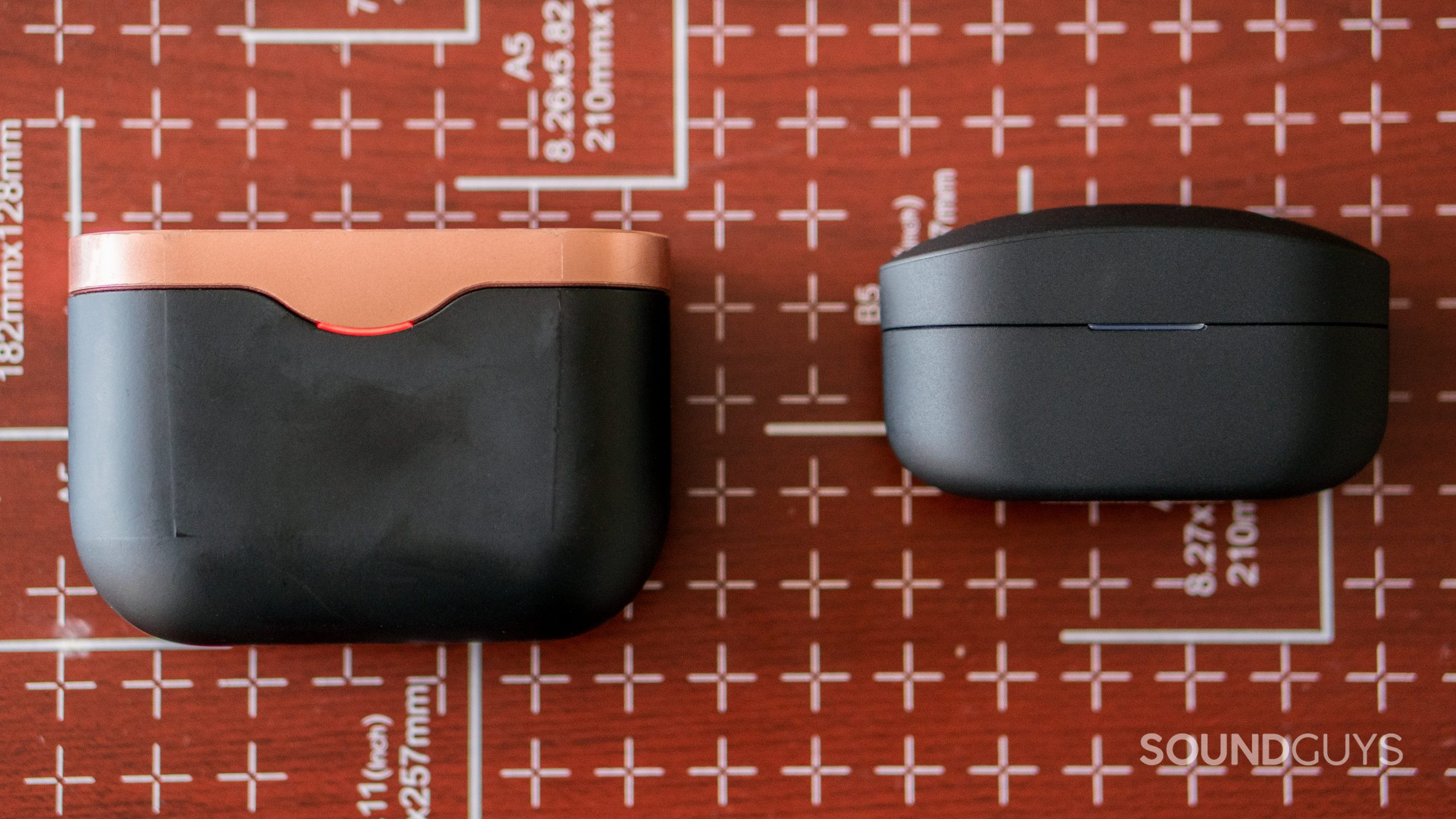
As for case design, do you like light mode or dark mode? The WF-1000XM4 ships in all black or warm silver. The case itself is pretty pocketable, with a notable footprint improvement over the previous, WF-1000XM3. Some of us still await the day Apple releases black AirPods, but until then the AirPods (3rd generation) only comes in that signature glossy Apple white. The case is plastic and solid-feeling enough. It looks like a narrower AirPods Pro case basically.
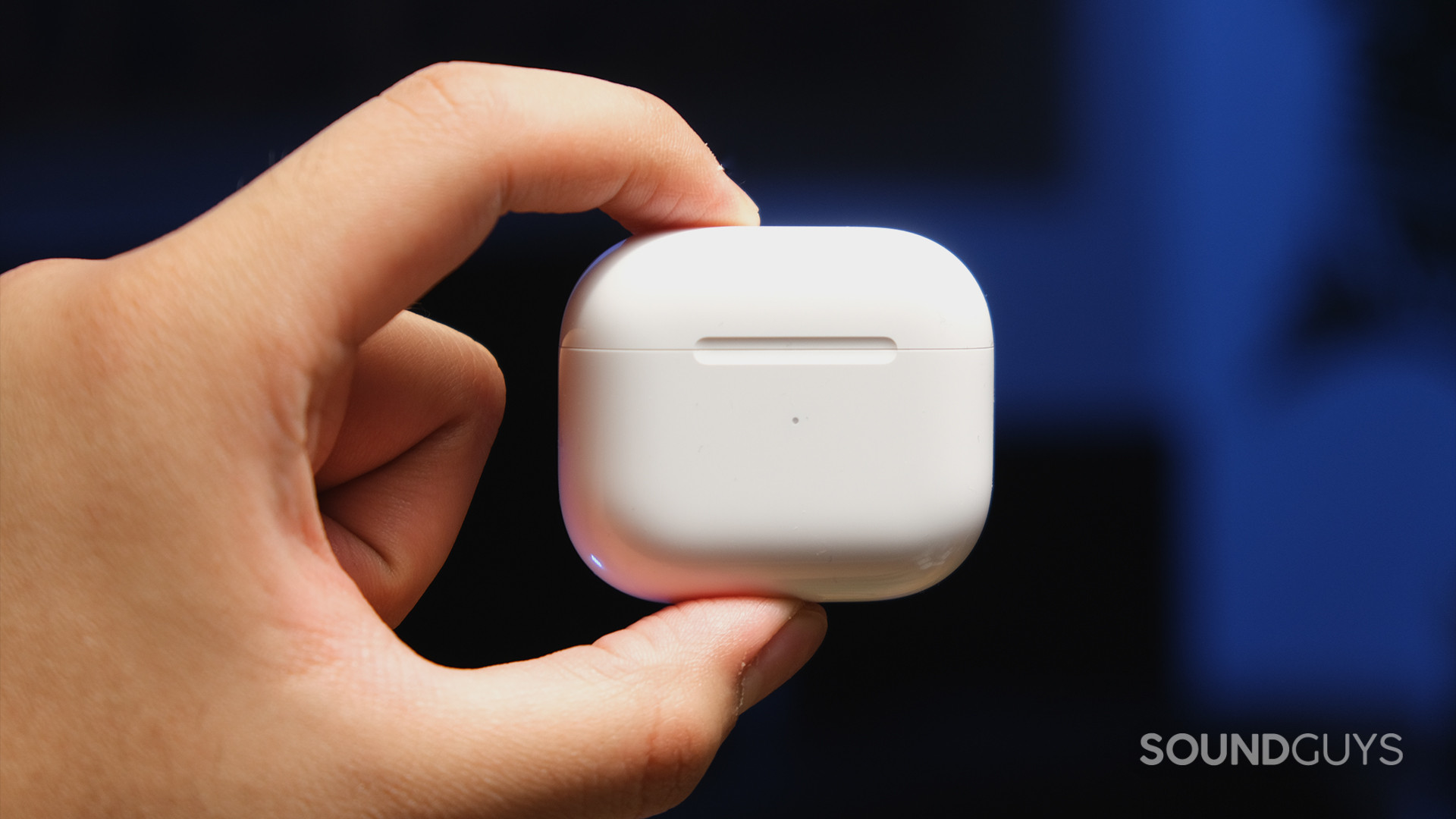
The AirPods (3rd generation) case charges via lightning cable or wirelessly, and it will work with the same MagSafe charging mat that you use with your iPhone. You have to pay extra to get a MagSafe charger, but it’s just a magnetic Qi wireless charger, and you can use any regular Qi pad, too. Like a different flavor of the same sort of functionality, the WF-1000XM4 case charges with USB-C or wirelessly with a Qi pad. A wireless pad also has to be purchased separately.
Can you customize the Sony WF-1000XM4 and Apple AirPods (3rd gen) controls?
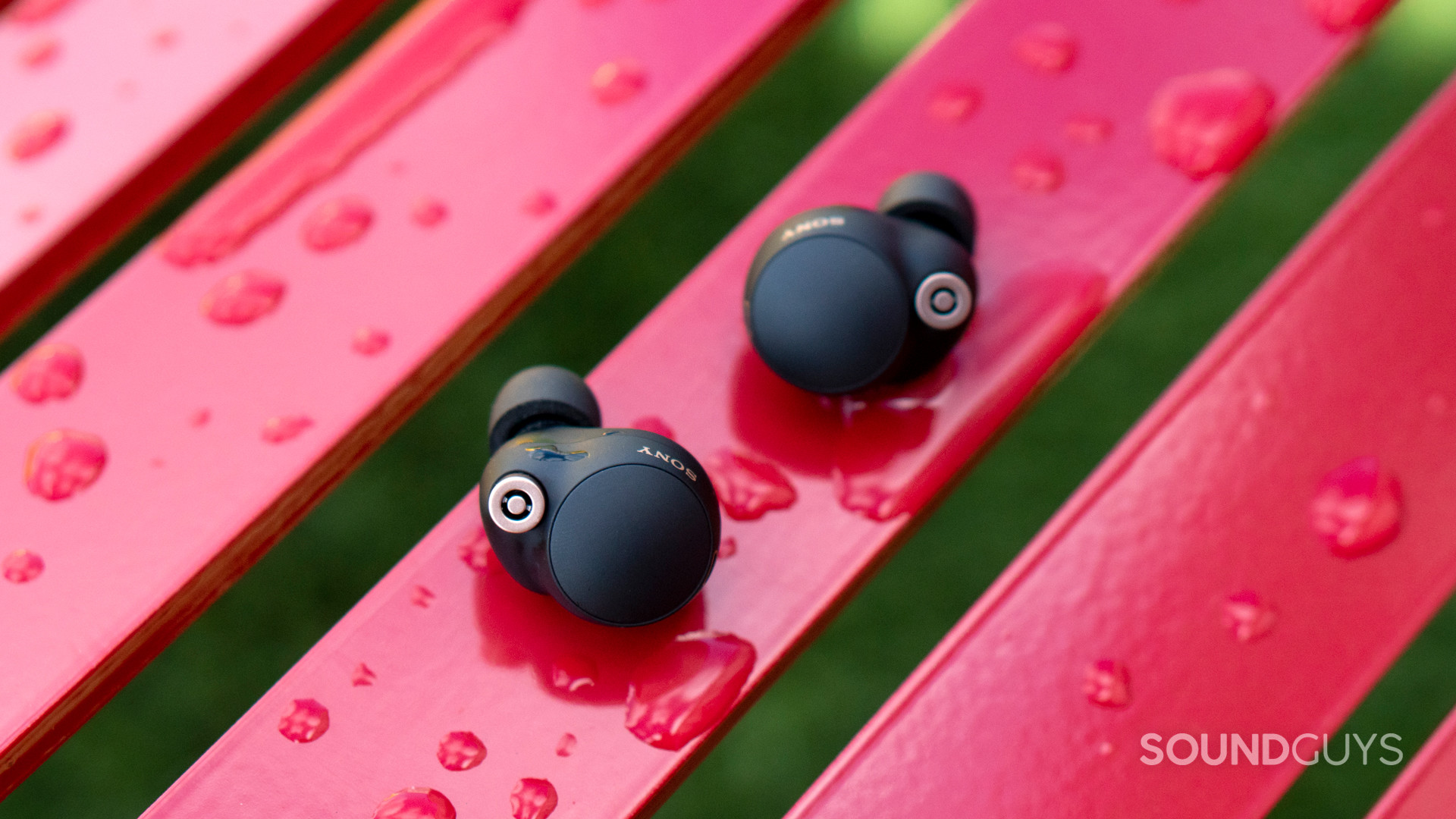
The AirPods (3rd generation) uses the same stemmed control design as the AirPods Pro (2nd generation). Each earbud recognizes taps and squeezes on the stem. If you have an iOS device, you can customize the settings. If you don’t have an iOS device, you can’t customize the controls. A workaround might be getting a friend with an iPhone to set up your desired settings, and then pair it to your Android phone. By default, however, here are the controls:
| Action (stems) | Either earbud |
|---|---|
One tap | Play/pause |
Two taps | Skip forward |
Three taps | Previous track |
Press and hold | Siri |
"Hey Siri" | Change volume, request directions, playback control, receive messages, and more |
Meanwhile, the Sony WF-1000XM4 also registers touch controls, which you can edit in its app. In addition, it features auto pause/play in-ear detection. Holding your finger on the bud will activate the passthrough function if someone is talking to you. The Sony Headphones Connect app works on iOS and Android, so you don’t need to worry about accessing your settings if you buy a new phone.
| INPUT | ACTION (left bud) | ACTION (right bud) |
|---|---|---|
| INPUT ONE TAP | ACTION (left bud) Mute/ANC/Ambient sound | ACTION (right bud) Play/Pause |
| INPUT TWO TAPS | ACTION (left bud) N/A | ACTION (right bud) Track forward/answer call |
| INPUT THREE TAPS | ACTION (left bud) N/A | ACTION (right bud) Track backward |
| INPUT TAP AND HOLD | ACTION (left bud) N/A | ACTION (right bud) Smart assistant |
Do you get more software features with the Apple AirPods (3rd generation) than the Sony WF-1000XM4?
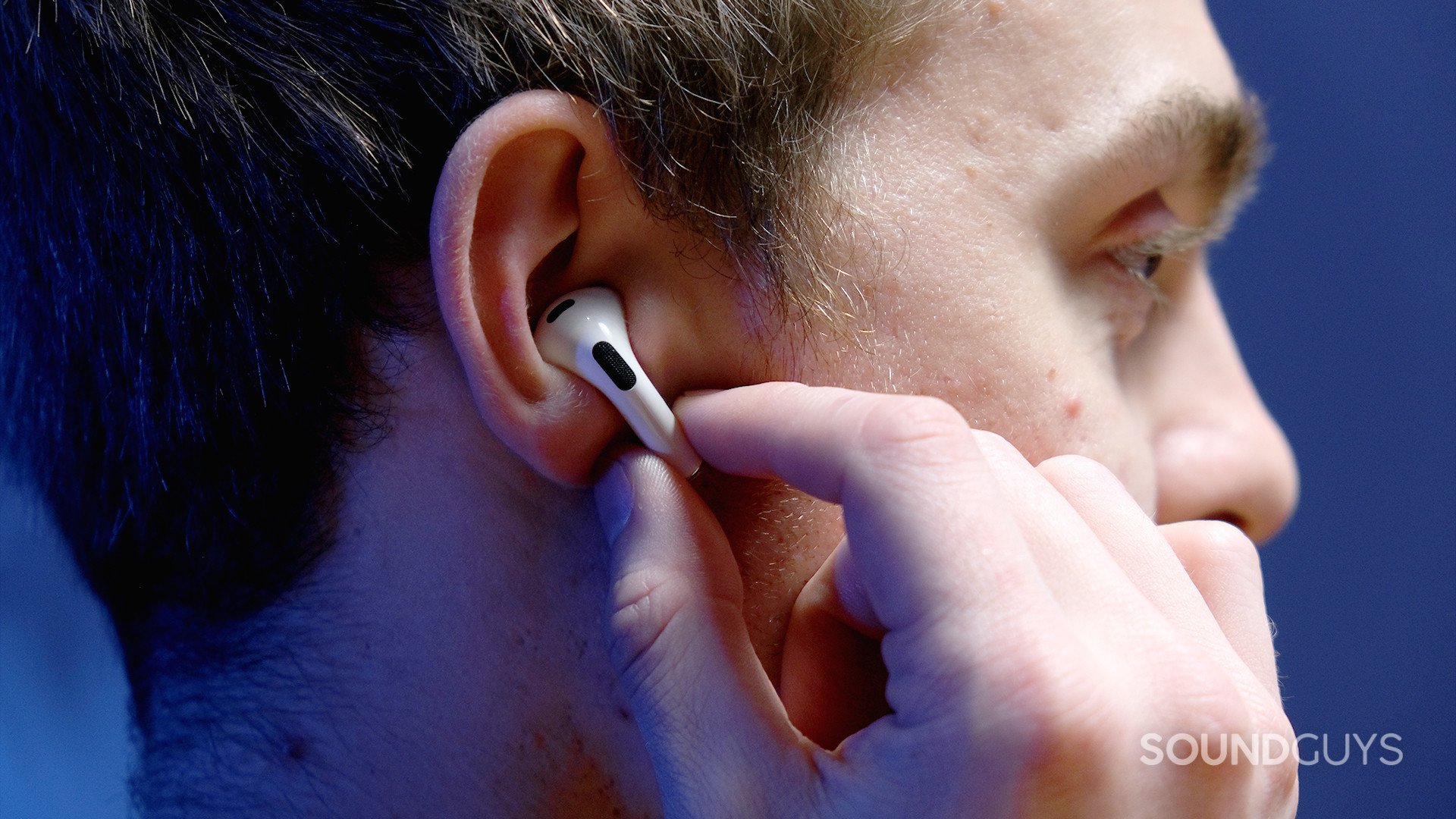
In the iOS and iPadOS Settings apps, you can access all the settings for the AirPods (3rd generation). Only Apple users can access things like firmware updates, or use hands-free Siri, and Spatial Audio. In Settings, you can customize your controls, and toggle spatialized audio and head tracking features. You can also set which AirPods earbud is the default microphone. When you buy the AirPods (3rd generation) a lot of what you get is in the software. Now, if you own an Android device you cannot do any of these things, because Apple has not extended support across OS platforms.
For the Sony WF-1000XM4, you’ll want to download the Sony Headphones Connect app. It works on iOS and Android. There you can adjust your desired ANC level, turn on ambient mode, update your buds, and adjust the EQ. It also has Adaptive Sound which here basically just switches between ambient and ANC modes depending on your environment. In-app Bluetooth codec switching is possible and you can toggle speak-to-chat as well.
Do the Apple AirPods (3rd generation) and Sony WF-1000XM3 have 3D sound?
The Apple AirPods (3rd generation) paired with your iOS device can try to spatialize audio that isn’t specifically mixed for Dolby Atmos and it works pretty well. This spatialized audio doesn’t sound as good as anything mixed for surround sound by an engineer, because it’s basically just an algorithm. Nevertheless, it’s still a fun new way to listen to music. To be clear Spatial Audio involves an engineer mixing for Dolby Atmos (or 5.1/7.1-channel tracks), while spatialized audio is an algorithm producing the effect on any source, even mono tracks.
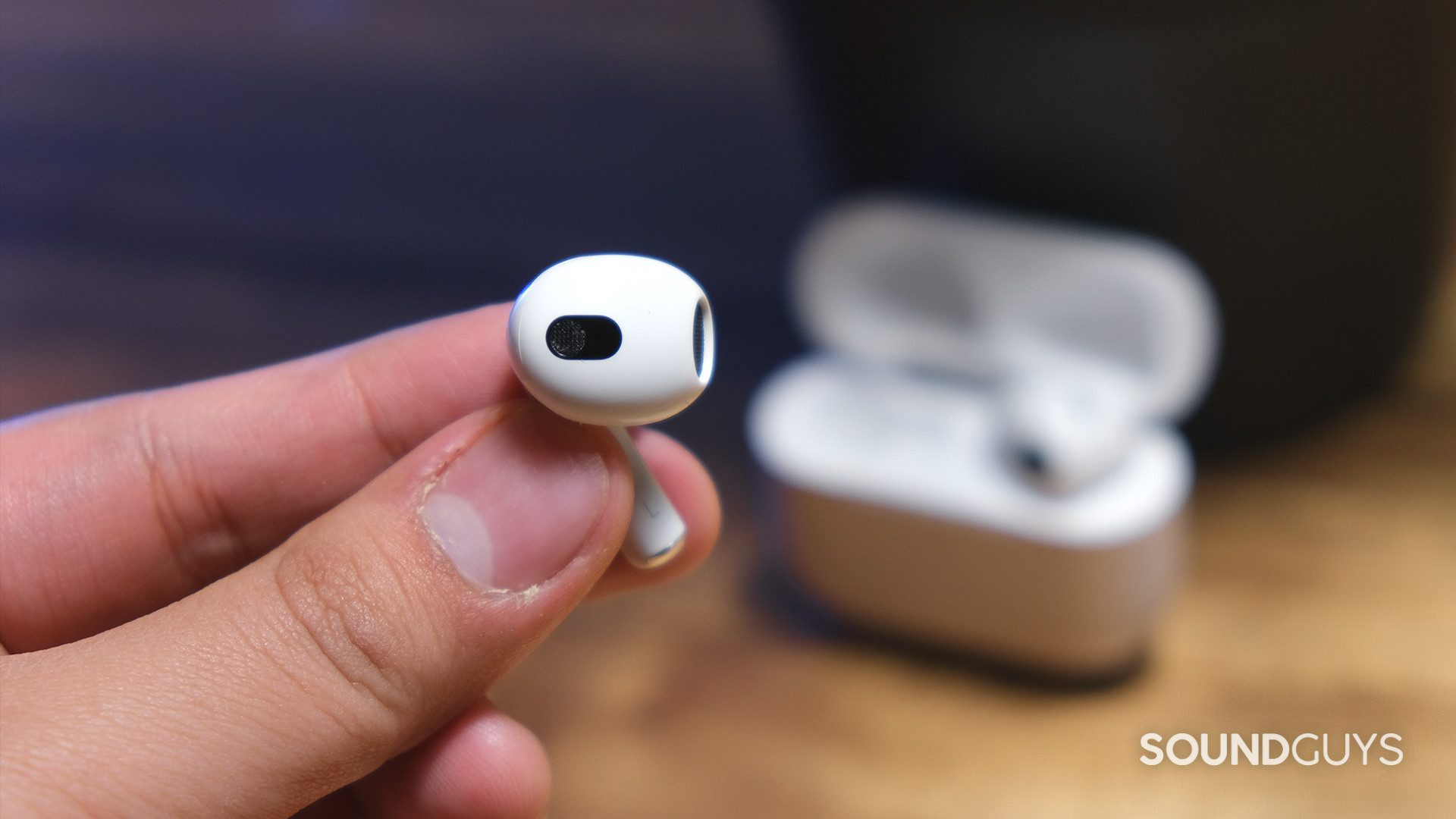
While the Sony WF-1000XM4 has its own 3D surround trickery, Sony 360 Reality Audio, it only works on sources specifically mastered for it. In this way, it’s pretty similar to how Apple Spatial Audio works, only it doesn’t use Dolby Atmos. Currently, this Sony 360 Reality Audio feature only has support on Tidal, Deezer, Amazon Music Unlimited, and nugs. Apple’s Spatial Audio solely works on Amazon Music Unlimited and Apple Music. A key difference between Spatial Audio and Sony 360 Reality Audio is that while both provide surround sound, Spatial Audio additionally has a head tracking function. This is particularly immersive if you listen to live recordings, but if you don’t, it can feel gimmicky pretty quickly.
The Sony WF-1000XM4 has more codec options, but for Apple users, it doesn’t matter
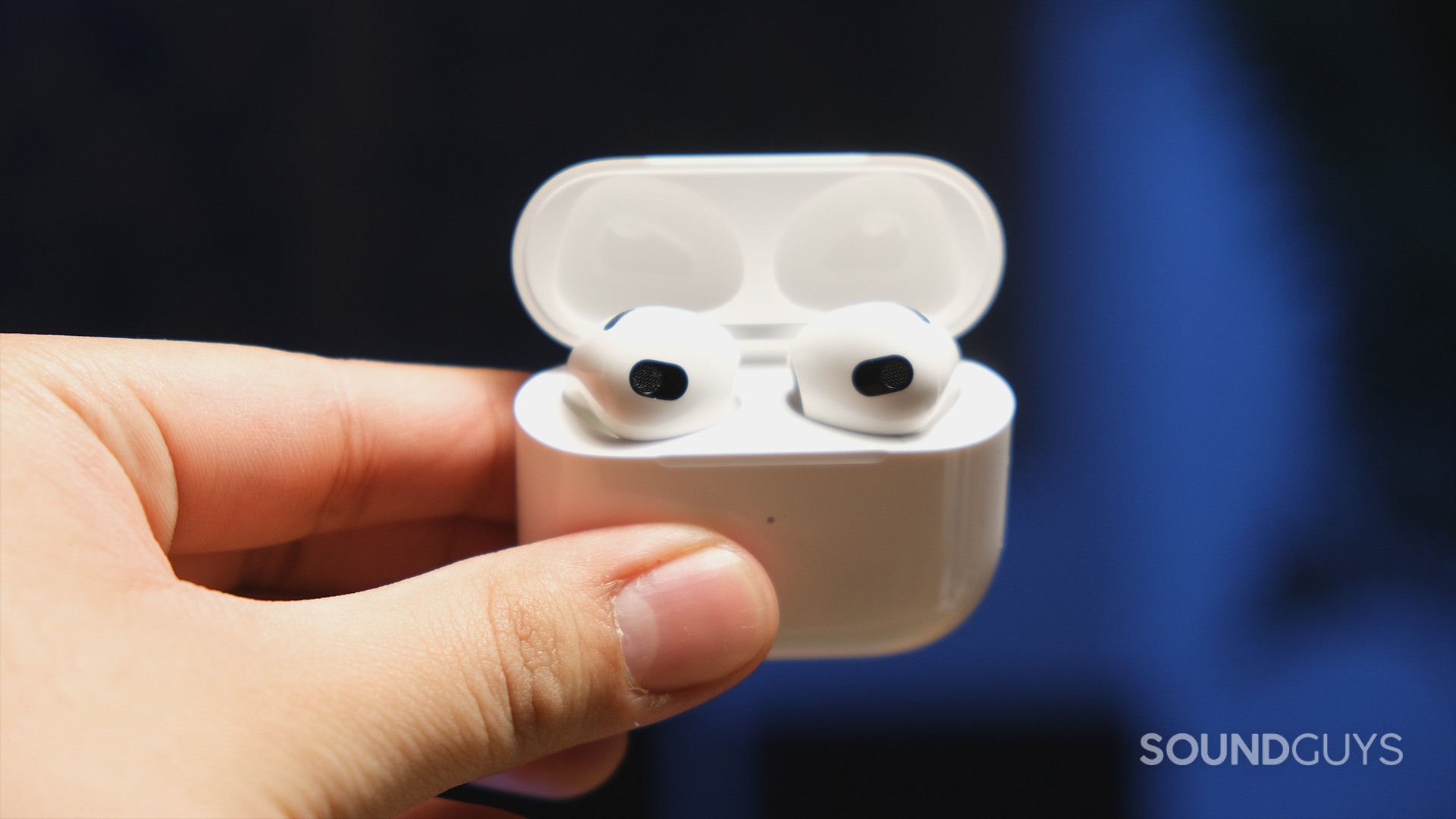
With an H1 chip, connecting to iOS is a breeze with Apple AirPods (3rd generation). Open the case near your iPhone and a card pops up, prompting you to connect. It only supports SBC and AAC Bluetooth codecs, which is unsurprising because AAC is all you need for an iPhone. On Android, you’re better off trying SBC, due to the unreliable results from AAC. To connect to Android you open the case and press the button on the back of the charging case. From there, it’s basically like any other Bluetooth headset. AirPods (3rd generation) uses Bluetooth 5.0, so there’s zero chance of future LC3 codec support.
The Sony WF-1000XM4 comes with extra codec support comparatively. First off, it uses Bluetooth 5.2, so you could conceivably get LE Audio and the LC3 codec in the future. Besides that, standard SBC, AAC, and the high-bitrate LDAC all gain support. iPhone users will still choose AAC. LDAC, while not high resolution because of adaptive transfer rates, offers better audio than SBC or AAC for reducing Android latency. The better codec depends highly on your smartphone, but they all work fine.
Is battery life better on the Apple AirPods (3rd generation) or Sony WF-1000XM4?
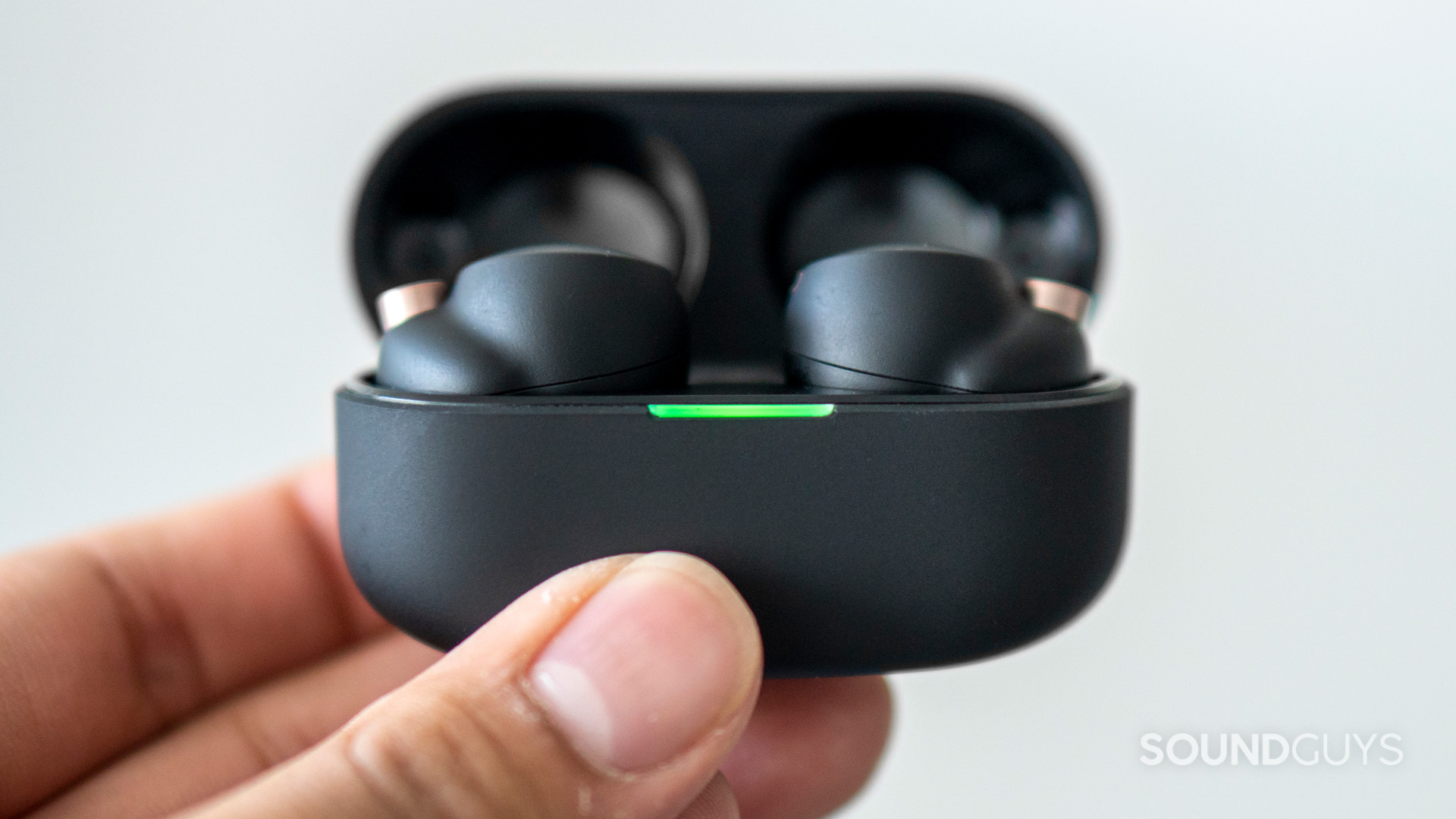
Smartly, the AirPods (3rd generation) case optimizes performance around your habits (iOS and iPadOS only), sometimes not charging the buds above 80% to preserve long-term battery life if it learns you tend to just put it in for a couple of minutes. Impressively, you get four additional charges for the earbuds, totaling over 30 hours. Fully charged the AirPods (3rd generation) yields 6 hours and 21 minutes.
Meanwhile, the Sony WF-1000XM4 has superior battery life in the buds. It can last about 7 hours and 43 minutes per charge—that’s with active noise canceling (ANC) on. Additionally, the case offers at least two more charges, resulting in just under 24 hours of playtime. So, you get less total listening time, but the buds carry a longer-lasting battery. Keep in mind that if you turn off ANC the WF-1000XM4 lasts even longer than the figure from our objective testing. Both sets have fast charging resulting in an hour of audio from five minutes in the case.
Both the AirPods (3rd generation) and WF-1000XM4 have fast charging. Five minutes in the case supplies an hour of playback.
The Sony WF-1000XM4 has superior noise canceling to the AirPods (3rd gen) isolation
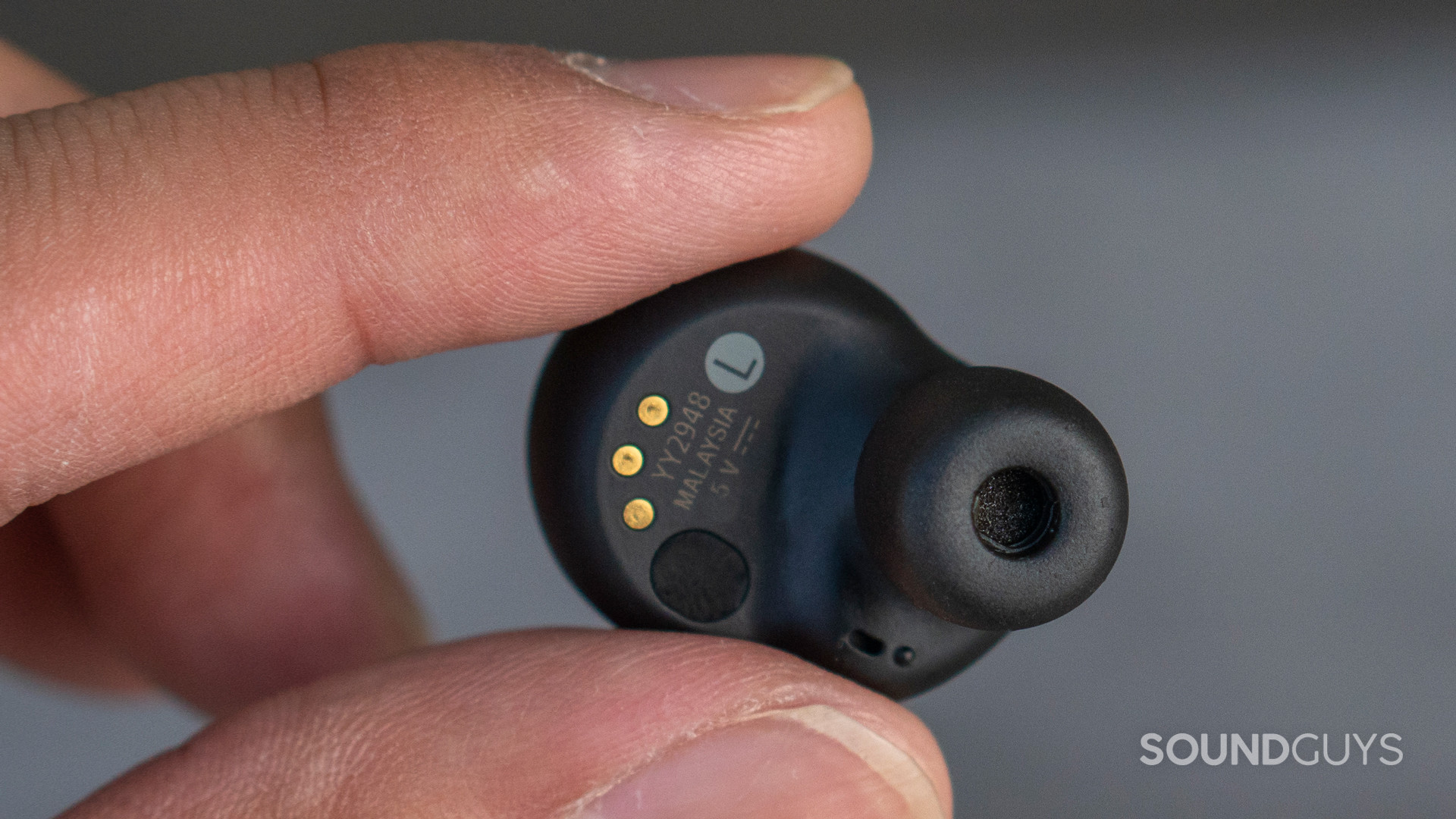
If you wondered about noise canceling on the Sony WF-1000XM4 versus Apple AirPods (3rd generation) it’s a bit like asking what keeps intruders out better: a castle with a moat and barricading, or an open door. It’s kind of unfair. Point blank, the Sony WF-1000XM4 boasts utterly superior isolation and ANC. Charts can be confusing, so the comparison below compares the isolation properties of the AirPods (3rd generation) against the combined ANC and isolation of the WF-1000XM4.
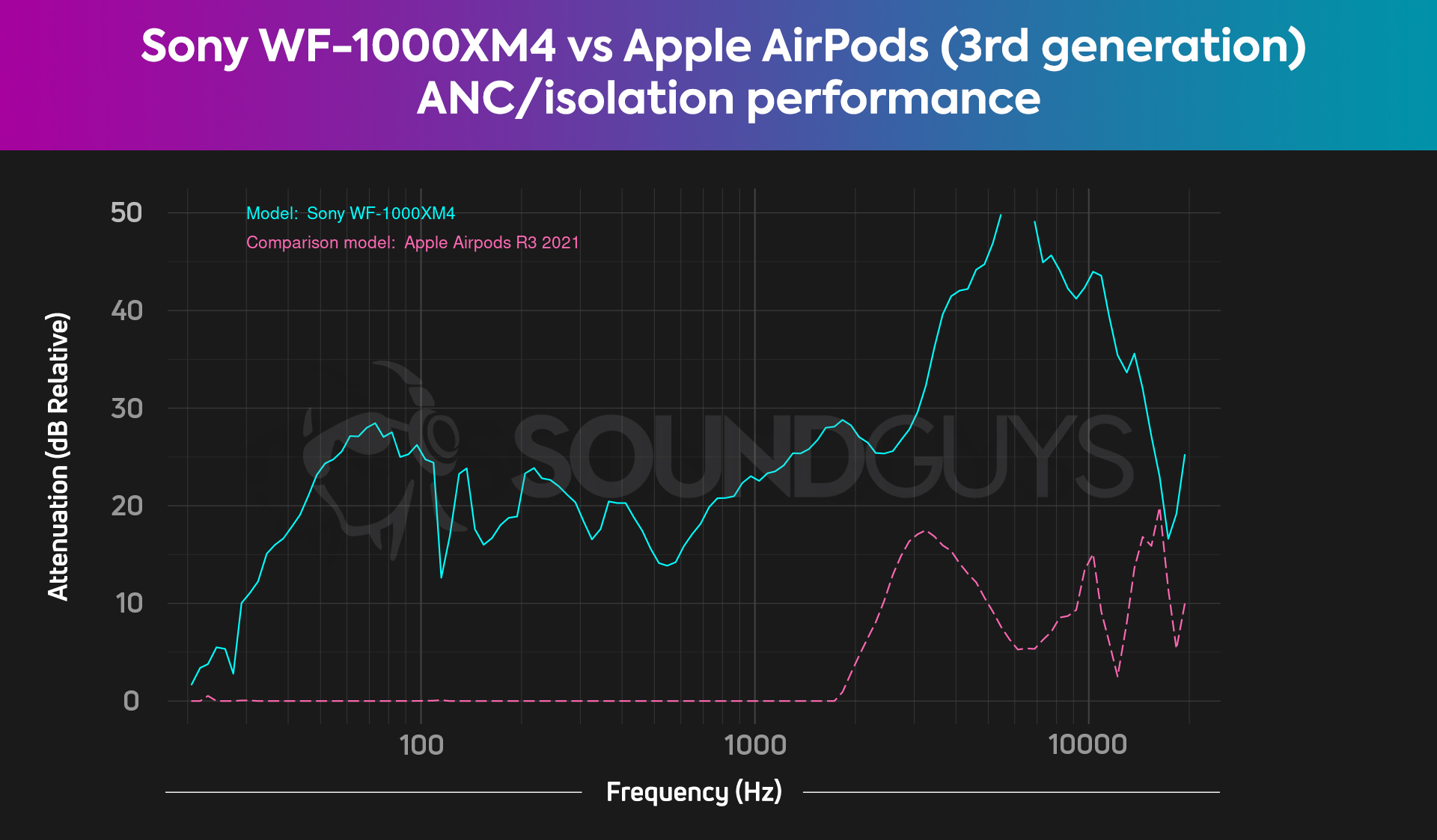
That’s not the whole story, however, because the Apple AirPods (3rd generation) has looked at this a bit sideways. What would ordinarily get called poor design—a totally unsealed fit—Apple has chosen to rework as a feature. Sure, you get passthrough with the Sony earbuds to hear your environment if you want, but with an unsealed AirPods earbud, you can directly hear your environment. Apple gave the AirPods (3rd generation) Adaptive EQ and designed it more like a tiny speaker to compensate for the loss of audio quality from not sealing to your ear canals.
Sony's ANC and isolation lets you keep your volume down by filtering out external sounds, rather than trying to overpower those sounds by turning music up.
Does that make the AirPods (3rd generation) better? Not really, but it’s nice to know Apple tried to make up for the historically poor performance in this area to improve the sound as a result of bad noise blocking. With that said, you still have to crank the volume of the AirPods (3rd generation) to cover up environmental noise. For this reason you may want to try a volume limiter with the AirPods (3rd generation). In any case, Sony wins this one because using earbuds with good isolation and ANC can actually save your hearing.
Do the Apple AirPods (3rd generation) sound better than the Sony WF-1000XM4?
Ordinarily, we’d look at the completely unsealed fit of a product like the AirPods (3rd generation) and say, zero isolation plus environmental noise equals loss of bass and unsafe volume levels to compensate for external noises. This still holds true for most earbuds, but Apple has adjusted the driver and added Adaptive EQ to mitigate the predictable loss of bass. You’ll still have to combat auditory masking, but you don’t lose sub-bass past around 50Hz. To be honest, not much happens below 50Hz, though it looks dramatic on a chart.
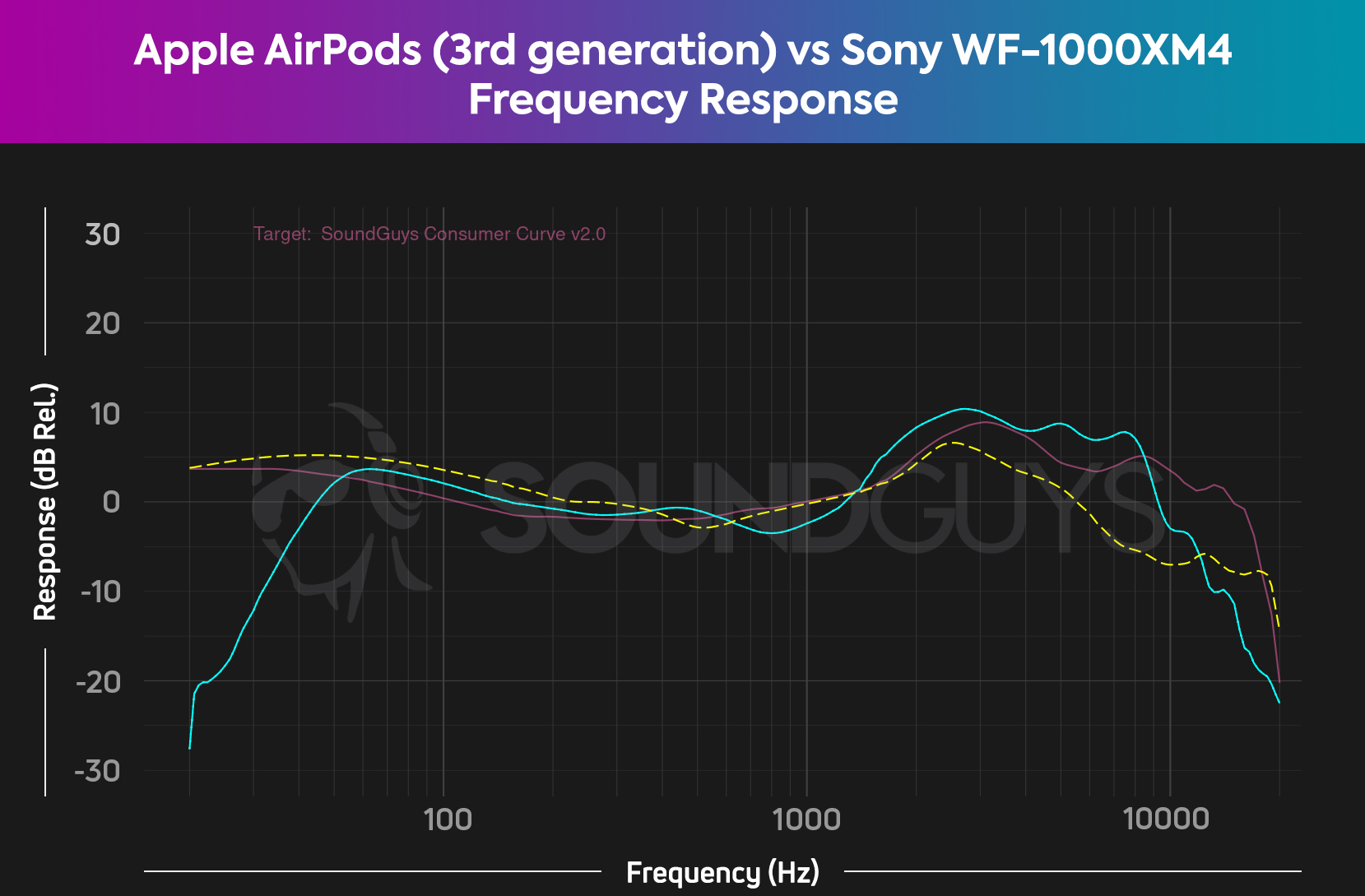
Compared to our target curve, the Sony WF-1000XM4 supplies fairly accurate audio, save for the slight exaggeration in bass and under-emphasis in high frequencies. The AirPods (3rd generation) is more closely aligned to our curve (though it both under and over-emphasizes) in the highs and in the mids. That roll off in the 50Hz range prevents the AirPods (3rd generation) from beating out the WF-1000XM4.
What’s more interesting is that the Sony WF-1000XM4 allows you to customize your EQ, which the AirPods (3rd generation) can do by using the EQ presets on iOS only. So while the WF-1000XM4 reproduces treble too quietly by default, you can use the Sony Headphones Connect app and just turn up the 2500Hz and above range. If you like some other kind of frequency response, it can do that too.
The Apple AirPods (3rd generation) sounds better than you might expect.
If you despise tinkering with your earbuds, both sets sound pretty good. Again, the AirPods (3rd generation) follows our ideal where it matters most. With that said, the lack of flexibility with no fully customized equalizer, and a purposely unsealed fit that encourages most people to turn up the volume to unsafe levels means it’s not quite as good. The AirPods (3rd generation) definitely sounds better than we expected based on fit, but the WF-1000XM4 has predictably good sound reproduction at safe volumes with the flexibility of app support to make it even better.
Hold up! Something’s missing:
This article’s missing a microphone frequency response chart. We have upgraded our testing and purchased a Bruel & Kjaer 5128 test fixture (and the appropriate support equipment) for our testing and data collection. It will take a while to update our backlog of test results, but we will update this review (and many others!) once we’re able with improved sound quality measurements, isolation performance plots, new microphone charts, and standardized microphone demos. These will be made obvious with our new chart aesthetic (black background instead of white). Each new mic sample begins with the phrase, “This is a SoundGuys standardized microphone demonstration …”
Thank you for bearing with us, and we hope to see you again once we’ve sorted everything out.
Is the Sony WF-1000XM4 or Apple AirPods (3rd generation) microphone better?
The Apple AirPods (3rd generation) microphone sometimes sounds great. It sort of depends on your paired device. You could say about the same for the WF-1000XM4. Both reject off-axis noise reasonably well. Perhaps the AirPods (3rd generation) edges ahead by sounding somewhat more accurate than the WF-1000XM4. Both sets of earbuds will transmit background noise from loud environments.
What do you think?
Apple AirPods (3rd generation) microphone demo (Ideal):
Apple AirPods (3rd generation) microphone demo (Street):
Sony WF-1000XM4 microphone demo (Ideal):
Sony WF-1000XM4 microphone demo (Street):
Which sample sounds better?
Sure, you’ve probably seen other people use AirPods during conference calls and Zoom meetings. Assuming you’re indoors and not contending with a lot of environmental noise, AirPods (3rd generation) work fine for meetings. There are better, purpose built options out there, but for the occasional meeting, go for it.
Should you buy the Apple AirPods (3rd generation) or the Sony WF-1000XM4?
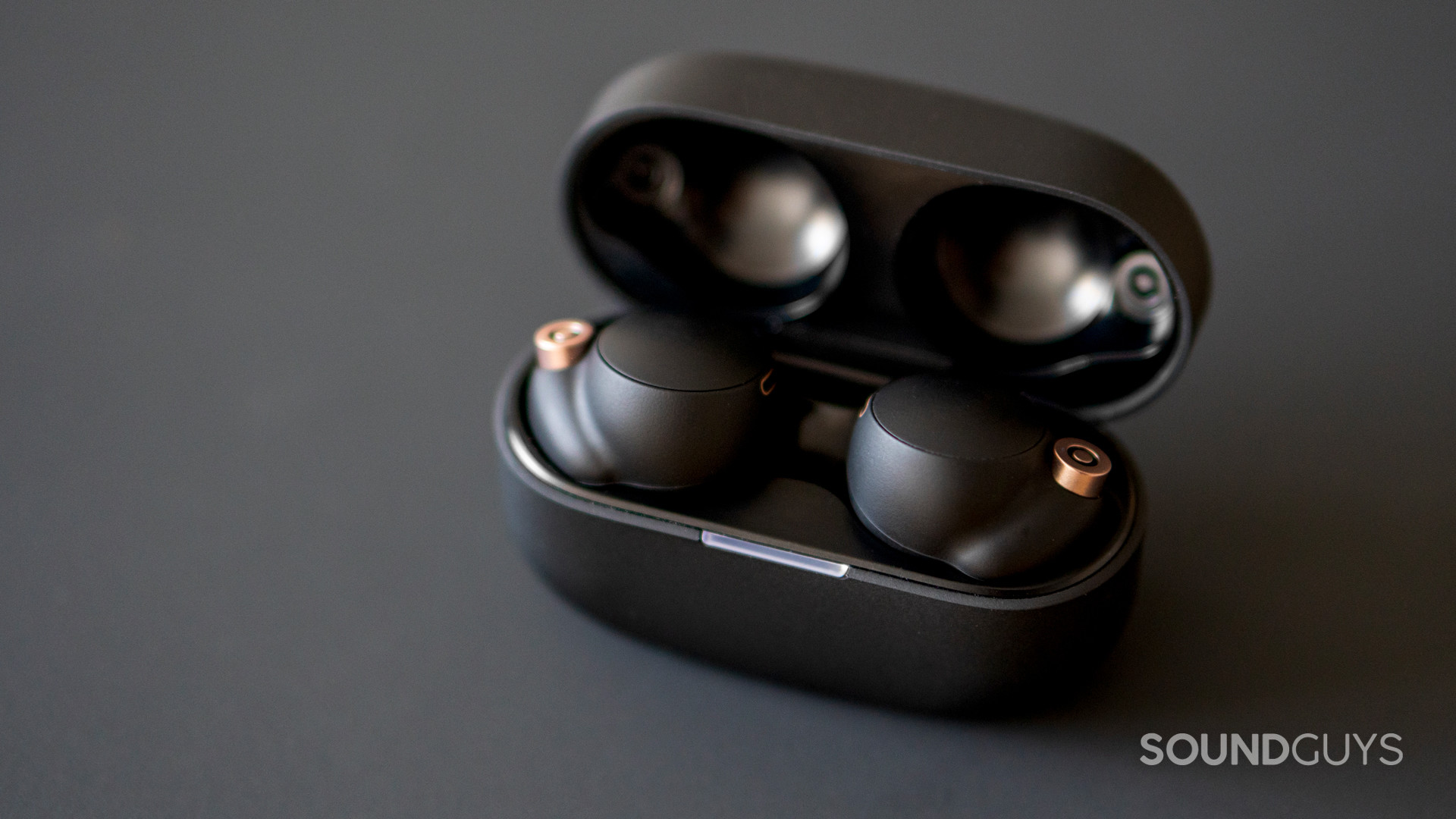
This ought to be a pretty easy decision for most folks, simply because both wireless earbuds are quite different. For one thing, the Sony WF-1000XM4 costs more than the AirPods (3rd generation), so if price matters, the AirPods (3rd generation) is going to make more sense. (Don’t purchase those AirPods so fast though, there are still plenty of other earbuds to consider.)
Those who own an Android device will find few reasons to choose the AirPods (3rd generation) as it misses out on the vast majority of its features from Spatial Audio to basic custom controls. iPhone users gain Spatial Audio, H1 chip functionality, and a decent sound (in quiet environments) with the AirPods (3rd generation). However, if noise canceling or isolation sit high on your list of priorities, the Sony WF-1000XM4 is the obvious pick.


The superior fit of the WF-1000XM4 and the same IPX4 rating as the AirPods (3rd generation) make it a more reliable choice for workouts. The Sony Headphones Connect app is available for iOS and Android, so ask yourself if the fast device switching afforded by the H1 chip and the spatialized audio are enough to sway iPhone users to pick the AirPods (3rd generation). If not, pick the WF-1000XM4, because you can still get surround sound with the Sony 360 Reality Audio, and more app flexibility regardless of your device.
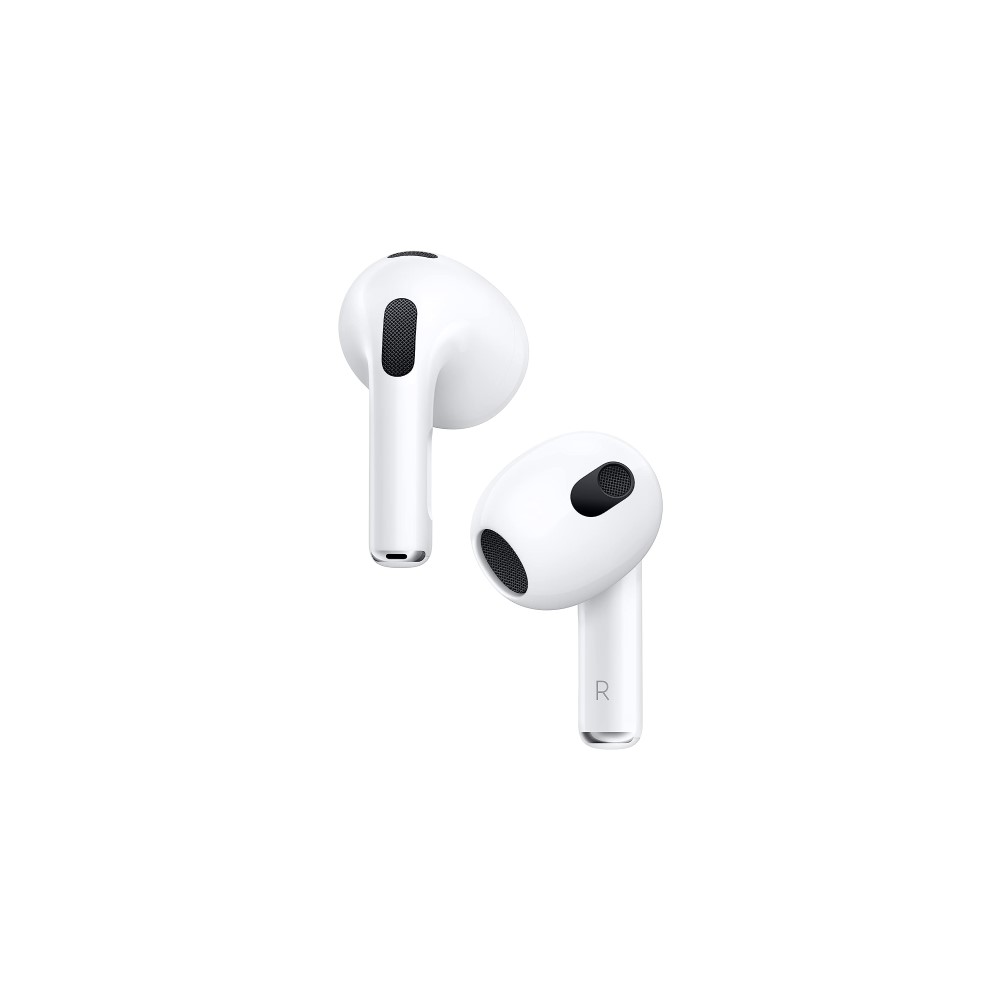
Android users have an easier choice. Because you miss out on the majority of the features of the AirPods (3rd generation), you might as well pick the Sony WF-1000XM4, or something else.
What are some alternatives to Sony and Apple’s earbuds?
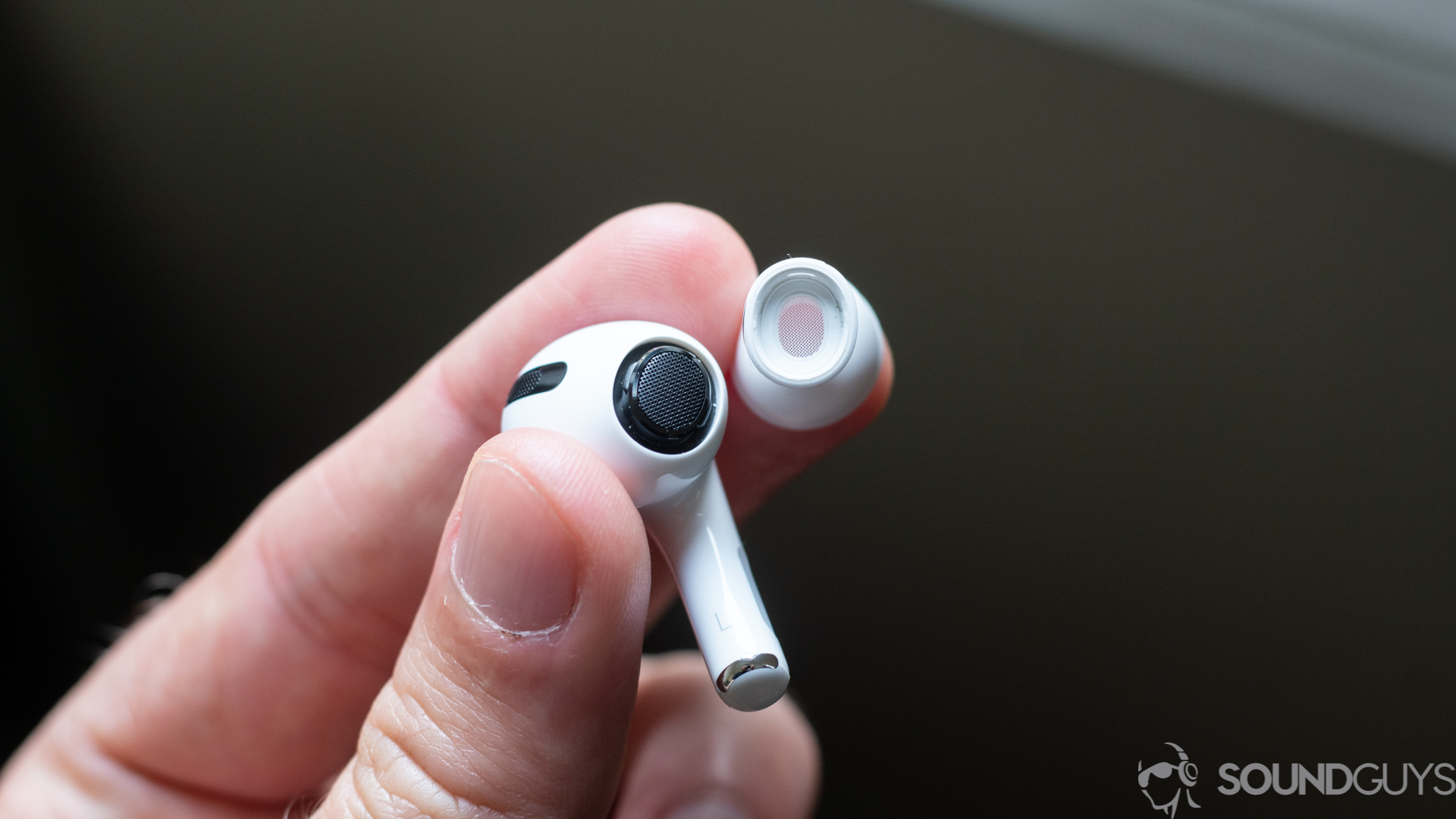
Here’s an easy one: if you want AirPods, choose the AirPods Pro (1st generation), or get the latest AirPods Pro (2nd generation). Either will stay in your ears better with ANC, and share most of the same features as the AirPods (3rd generation). This statement only applies to iOS users though, because again, Apple has basically barred Android from the full AirPods experience.
If you have an iPhone or Android, check out the Beats Fit Pro. The winged fit is far more stable in your ears than AirPods (3rd generation). It has the same H1 chip as the AirPods (3rd generation), features a consumer-friendly sound, and has some ANC on tap as well. Along with the same IPX4 rating, the Fit Pro offers a bit of added flexibility absent in the AirPods, and for $50 USD less money than the Sony buds. The app works well with Android too, although it only has AAC and SBC codecs, which isn’t always ideal for Android if you watch a lot of YouTube.
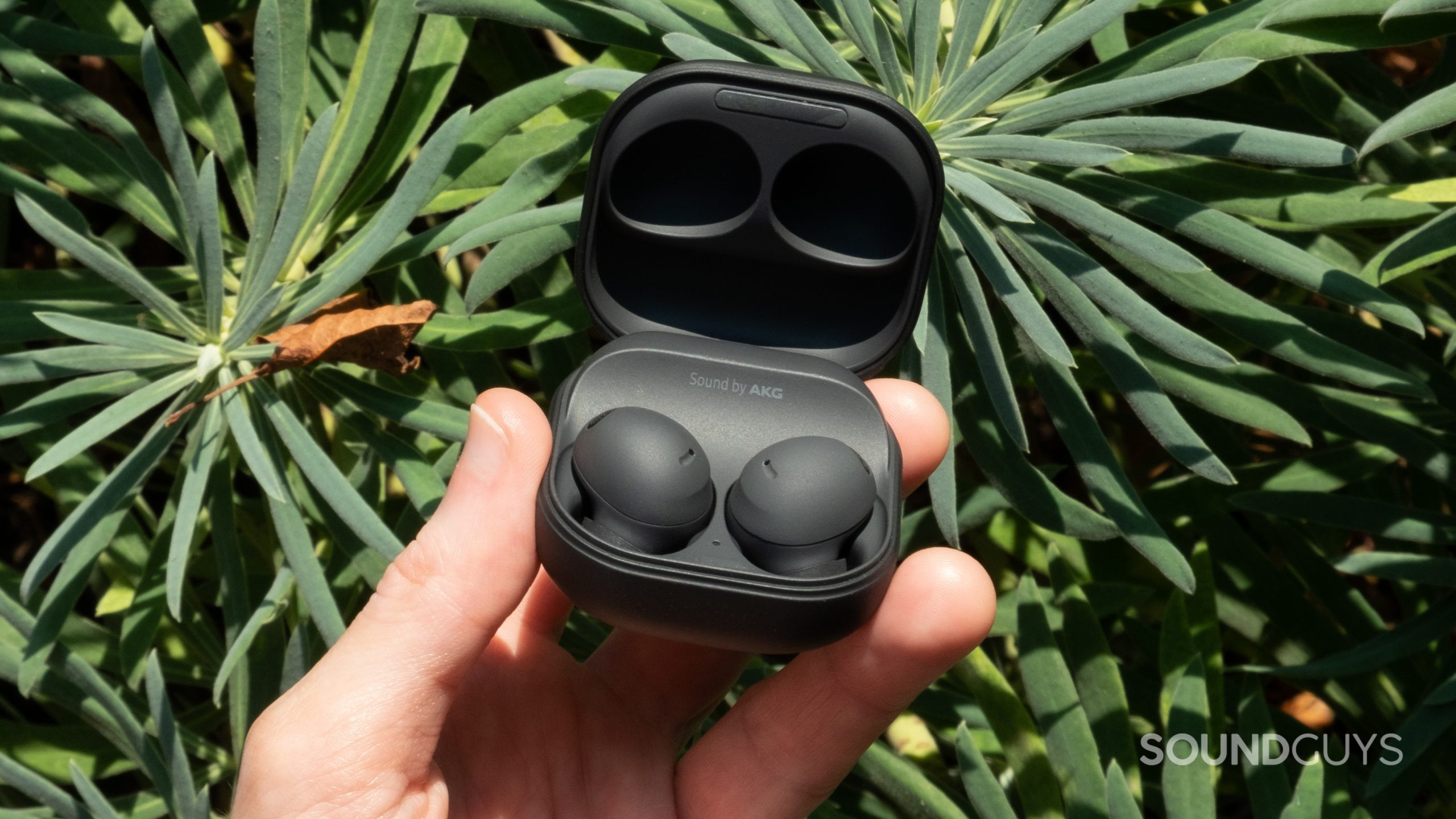
Admittedly, the WF-1000XM4 beats most every other earbud’s ANC, but at a dear price. If surround sound and ANC are both requirements and you’ve got a Samsung phone, try the Galaxy Buds 2 Pro with its excellent ANC, or the more affordable Galaxy Buds 2. These don’t have as in-depth an equalizer, using presets instead of a functional EQ slider, but both sport ANC and use 360 Audio based on Dolby Atmos. This works similarly to what Sony offers for less money, or see how the more inexpensive of the two, Galaxy Buds 2, compares to the AirPods (3rd generation).
What if you don’t want active noise canceling?
Here’s an outlier: if you want an unsealed fit because you like being aware of your surroundings (and dislike transparency modes), but don’t care about all the Apple extras, try the Urbanista Lisbon. It’s very inexpensive and combines a stabilizer with an unsealed fit, which is a smart way to keep the buds in your ears without sealing them completely.
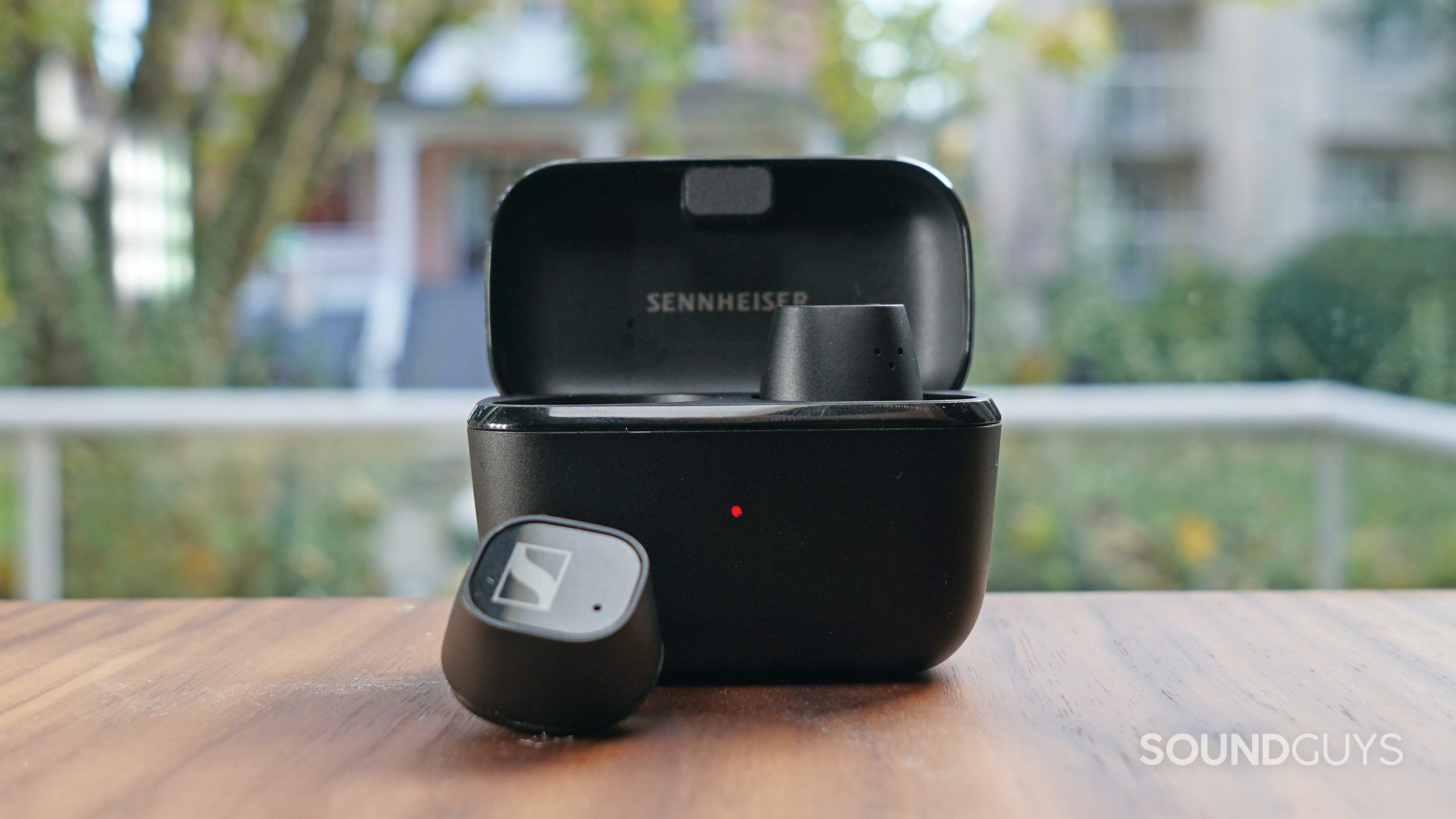
Finally, if ANC isn’t a priority, consider the Sennheiser CX True Wireless. The sound quality is good, as is fit. It uses the aptX codec for better quality audio on Android devices than AAC or SBC (which it also has). The market remains crowded, but for the millionth time, don’t buy AirPods for Android devices.
Frequently asked questions about Sony WF-1000XM4 vs Apple AirPods (3rd generation)
No, none of the Apple AirPods support Bluetooth multipoint. However, you can take advantage of automatic device switching between Apple hardware under the same iCloud account. This means when you’re listening to music on your iPhone and start playing a video on your MacBook, the AirPods (3rd generation) will stop playing from your phone and immediately switch to the laptop’s audio output.
No, surprisingly for an expensive flagship set of earbuds Sony did not imbue the WF-1000XM4 with multipoint.